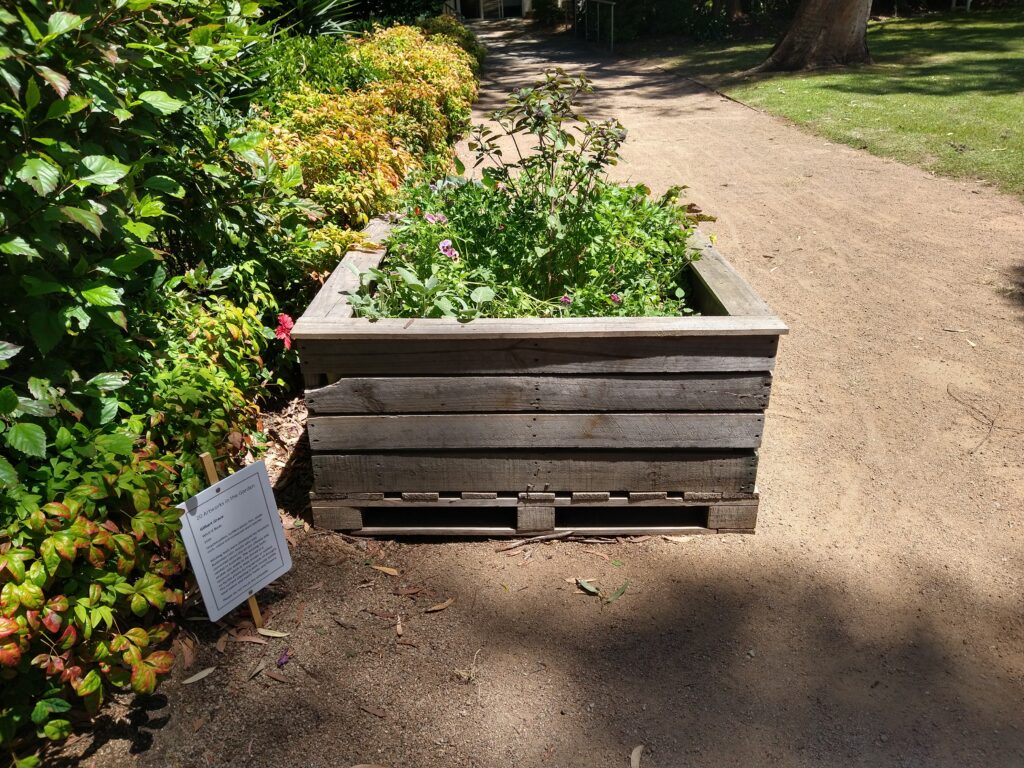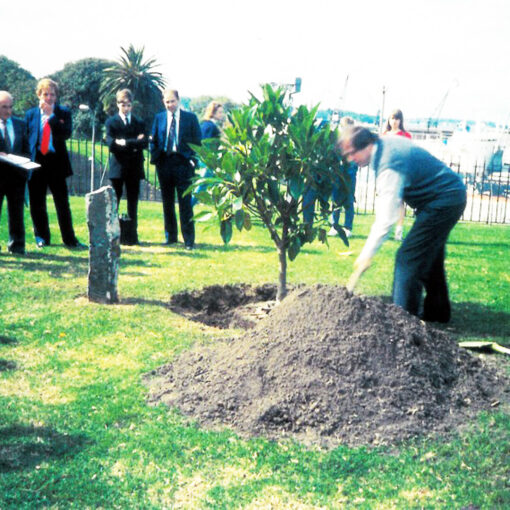
‘Wick’d Bins’ are an iteration of the wicking bed designed by Colin Austin. I have reduced the number of components and utilised pallets as a form of recycling. If cost were not a consideration then I would go with longer lasting materials and construction. These adequately serve as a demonstration of the concept.
There is a p.v.c. overflow pipe inserted into the bottom 100mm of the bin with an elbow to retain water and act as a visual gauge. Water can be introduced slowly through the pipe using a hose, or as a conventional top watering, including water falling from the sky. The bin comprises three remanufactured pallets lined with shade cloth to protect a double layer of builders plastic film.
A layer of soil is first to go in then timber and garden offcuts, then more composted soil mix. Finally topped with mulch. The plants have about 300mm of root-space before the water reservoir, which makes up the bottom 100mm. Height of the reservoir is determined by the length of vertical pipe connected to the elbow. There is no geotextile barrier, Colin Austin thinks they are not necessary.
This structure intends to mimic the natural geological processes with a water table at a certain distance below the soil surface. Worms and humus are introduced to help establish soil culture. Bugs are not deterred as they are already under assault from industrial agriculture. Each caterpillar becomes a butterfly, or food for a wasp or avian forager also in decline due to industrial agriculture and habitat loss.
These bins, being mobile, can be placed on hard surfaces reducing the heat island effect prevalent in modern urban areas. Being frugal with water they can be a productive addition to concrete backyard, bitumen car park, or gravel yard.



